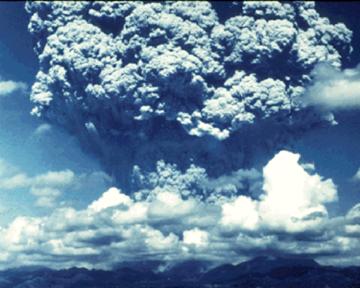EPA to Mandate Reductions in Emissions from Volcanoes

Emission from volcanoes in the future could be greatly restricted under new rules that are part of the Clean Air Planning Act.
(Mt. St. Helens, Washington State) Under new rules that are part of the Clean Air Planning Act, volcanoes, long responsible for more particulate and sulfur dioxide pollution than all human-caused emissions, might not get a pass any longer.
The volcanic emissions portions of the legislation was finally agreed upon by congressional negotiators after congress decided to allow states in which eruptions occur to come up with their own enforcement mechanisms.
"We realize that it might be difficult for the states to come up with efficient and cost-effective measures for achieving volcanic emission reductions", said EPA Assistant Administrator Dr. Susan Vulcan. "That is why the reduction requirements are implemented gradually over time...only 5% each year".
Dr. Vulcan said that state officials will have a much easier time than some countries will have if the United Nations Volcanic Emissions Negation Treaty (UN-VENT) is ratified. She explained that volcanoes in the United States are not nearly as explosive as volcanoes in other countries. For instance, the eruption of Mt. Pinatubo in the Phillipines in June of 1991 emitted millions of tons of sulfur, a pollution event that is well beyond what can be cleansed by scrubber technology now widely used at coal-fired power plants.

0 Comments:
Post a Comment
<< Home